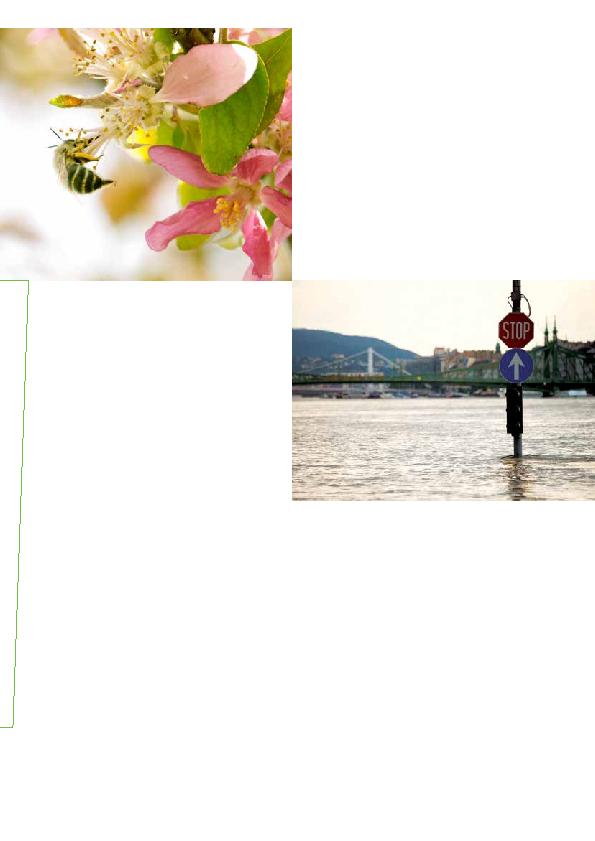
deforestation in the Yangtze basin continued unabated until it was
banned when flooding and landslides killed over 5,000 people. It was
subsequently calculated that the value of eroded topsoil, lost farm
productivity and loss to the local community was twice what the timber
fetched on the international market. As long ago as 1997, the World
Resources Institute estimated the natural products harvested by the
global pharmaceutical industry to be valued at more than $80 billion.
The value of bees to pollinate fruit trees is put at $190 billion each year,
8% of global agricultural output.
preserve, the greater the capacity to sequestrate carbon; the more
fisheries you conserve, the more you can draw on them to feed
growing populations. Overspend, and you lose not only the capital
but also the accrued interest. Fell trees for timber, and you not
only reduce the capacity to absorb carbon but make the timber
give out what it had previously taken in; drain wetlands and clear
mangrove, and you reduce nature's provision for flood alleviation
and storm protection. In Sri Lanka, in the days and weeks after
the tsunami, I saw first-hand the financial and human cost of
replacing wave-dissipating mangroves with waterfront villas that
crumbled when inundated and allowed the sea to surge inland.
Emissions from Deforestation and forest Degradation (REDD)
initiative has estimated the cost of preserving 90% of the world's
remaining forests to be $20 billion per year, yet the ecological
services they provide air and water purification, soil protection,
flood alleviation, and carbon absorption they've valued at $4.5-5
trillion per year. And it's not only the tropical forests. London's
trees are estimated to be worth $6.1 billion, and throughout the
UK, 1 ha of public green space is worth $1,000 per person per year
solely in health benefits.
supported its clearance for shrimp farming. Over the period of one
study, the natural mangrove was estimated to be worth $600; the
shrimp farm, $9,600. But $8,000 came in the form of government
subsidies, and the profit from shrimping was only $600-1,200.
When the value of the mangrove for storm protection and fish
spawning was factored, its value increased to $11,000 a clear
case for conservation and public wealth over destruction and
private profit.
economic and social consequences. In the absence of prudent
environmental management, ecological bankruptcy ultimately brings
starvation due to the failure of food crops, conflict for the control of
scarce natural resources and population displacement. In a world in
which future resource availability will be increasingly constrained
and will come to account for a larger portion of business overheads,
it is vital we understand how natural capital influences productivity
and profitability. The limits on corporate growth are no longer just the
internalities of labour, capital and technology. The challenge is to make
the environmental externalities visible to decision-makers, for businesses
big and small; to understand the extent to which they are natural capital
dependant; and to adopt natural capital accounting (NCA) to secure, as
illustrated in Figure 1, improved performance and profitability within a
framework of regulatory compliance.